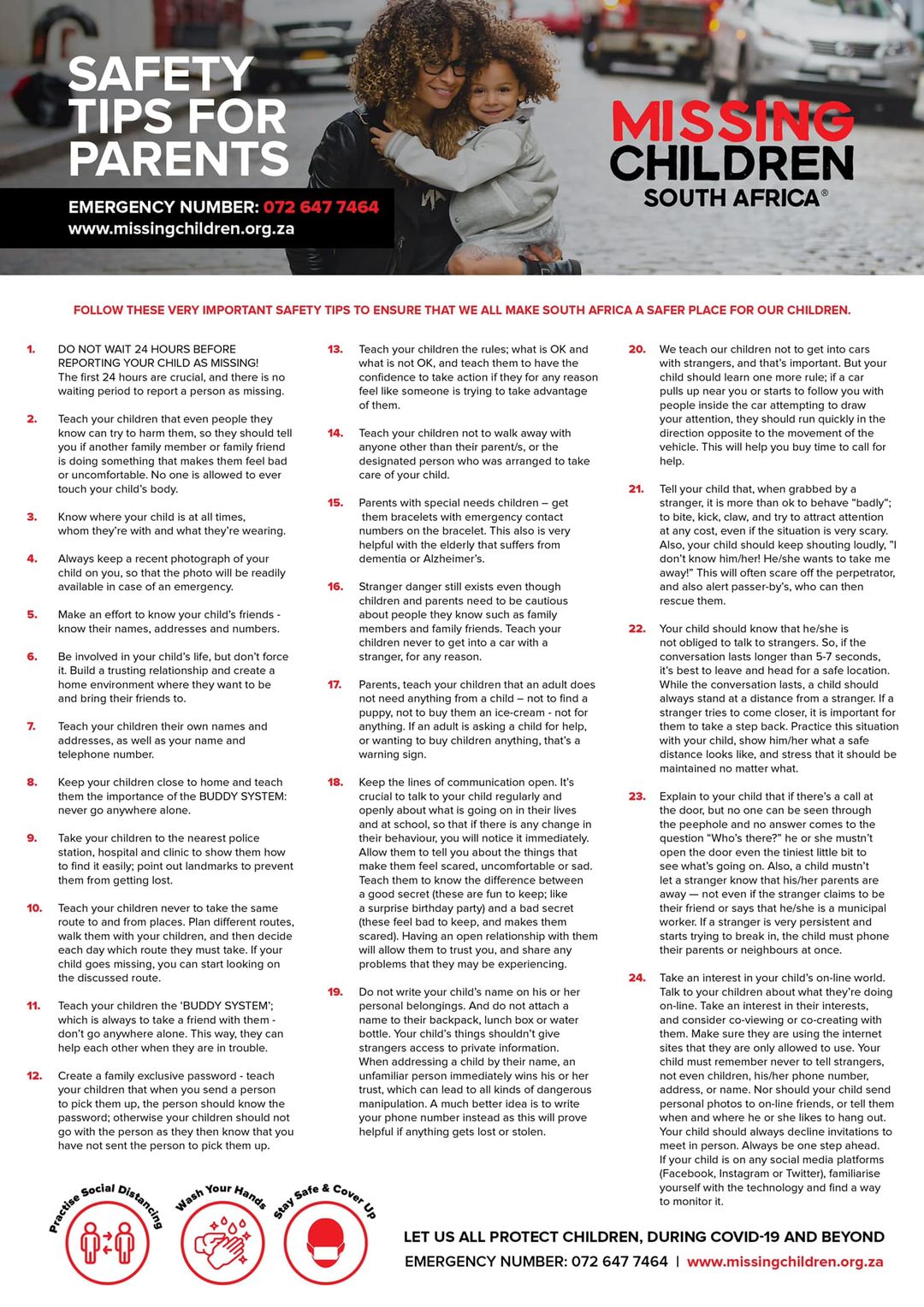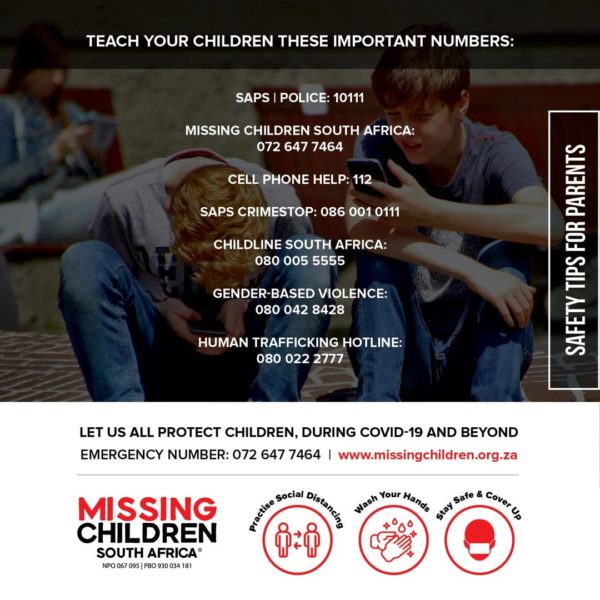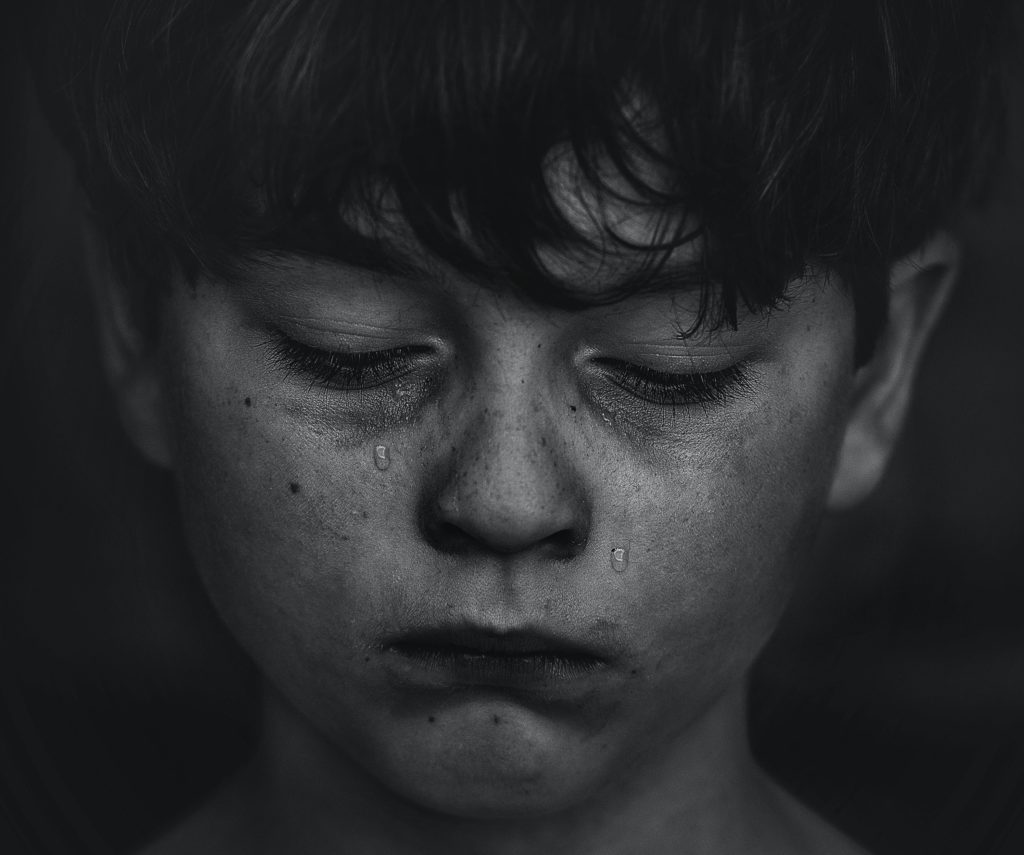Children in South Africa finally began their school year on Monday, February 15. As they head back and leave the house more, it is increasingly important to put measures into place to protect their safety.
Hundreds of children go missing in South Africa every year. According to Missing Children South Africa’s statistics, 77% of missing children are found.
In November 2020 the Democratic Alliance’s (DA) Mireille Wenger revealed statistics that over 3400 people in the Western Cape, including nearly 700 children, were kidnapped between 2015 and 2019.
A missing child is every parent’s worse nightmare. While you cannot always be in control of a situation, there are small things you can do to lessen your child’s risk of being taken.
What to do to lower risk of being taken:
– Speak to your children about being wary and not speaking to strangers, and especially not to leave an area with someone they do not know.
– Encourage them to express themselves when they feel uncomfortable around people, even those they know. Sometimes family members or friends can be perpetrators of violence.
– If possible, do not allow your child to walk alone. Arrange lift clubs/walking groups if it is in your means to make sure they are not isolated.
-If your child has a cellphone, make sure tracking is enabled. Have them share their live location on Google Maps when they head out without you so that you know where they are in case anything happens.
– As parents and adults, it is extra important to be conscious of our surroundings. Pay attention to how children in the area react to adults, as they may be strangers with bad intentions.
General safety tips:
– Make sure your child learns their name, address, a parent’s name, and number in case they get lost and need help finding you. Encourage them to approach a mother with a child for help. While this is not guaranteed, they are typically the most trustworthy in these events.
– Carry a recent photograph of your child with you in case of an emergency.
– Do not write your child’s name or a cellphone number on their school bag/items as that could be identifying information a stranger could use to gain your child’s trust.
– Do not overshare your child’s schedule on social media.

What to do if your child goes missing
– If you’ve lost your child in a shop, park or something similar make sure to shout out a description of the child so that those around you know to look out for them. This makes it harder for the kidnapper to escape with your child without being noticed.
– Try not to panic, rather keep a level head.
– Don’t wait 24 hours to report your missing child.
– Do a quick search to check whether your child is really missing. Contact their friends, school, neighbours, etc.
– Get a responsible person to stay at your house while you’re at the police station or searching for your child. This person can take messages if someone calls about the child’s disappearance or if the child returns home.
– Go to your nearest police station and take a recent photograph of the child with you. Make sure that the photograph is of good quality so that your child will be easily identifiable.
– Give a good description of what the child was wearing, their last whereabouts and any information that may help the police.
– You’ll have to complete a SAPS 55 (A) form that safeguards the police against false or hoax reports. This form also gives the Police permission to distribute the photo and information of the missing child.
– Make sure the police give you a reference number and contact name and number of the SAPS officer(s) assigned to the investigation.
– Remember that if your child returns home, you’ll have to go to the police station to report that the child is safe.
Missing Children SA advises parents to help kids memorise important numbers that may help them in the event of a crisis. Important numbers to remember include:

ALSO READ: Child kidnapping cases increase yearly in SA
Picture: Pixabay

